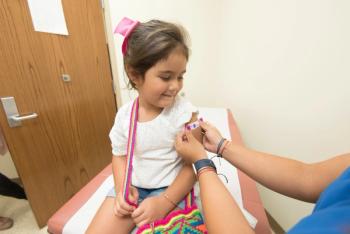
Patients With Gram-Negative Skin Infections 6 Times More Likely to Receive Inappropriate Empiric Therapy
Patients with only a gram-negative infection and/or mixed gram-negative/gram-positive pathogens were more likely to receive IET (22.8%, 270 out of 1184; and 22.8%, 633 out of 2778, respectively) compared with patients with infections caused by only gram-positive organisms (6.5%, 381 out of 5891).
Gram-negative pathogens are increasingly responsible for acute skin and skin structure infections (SSSI), which in general account for nearly 2% of all hospitalizations in the United States.
Investigators with Melinta Therapeutics, EviMed Research Group, BD, and GST Micro sought to analyze how the administration of inappropriate empiric therapy (IET) for patients with SSSI caused by gram-negative organisms impacts outcomes. Their results were presented at the 22nd annual Making a Difference in Infectious Diseases (
Using data on culture-positive bacterial skin/wound isolates from consecutive patients treated with empiric antibiotic therapy at 68 US acute care hospitals between 2015 and 2017 in the BD Insights Research Database, the research team categorized SSSIs as abscess, cellulitis, chronic ulcer, wound, other or multiple infection types, and also stratified by bacterial pathogen into gram-negative, gram-positive, or mixed.
If the antibiotic that was started within 5 days prior to final culture result did not cover the organism(s) or was resistant, IET was considered present. Investigators used 10th revision of the International Statistical Classification of Diseases and Related Health Problems (ICD 10) codes to classify the SSSIs.
A total of 9853 admissions met inclusion criteria. Of those, 40.2% involved a gram-negative organism. Overall, IET was administered to 13% (1284). Patients with only a gram-negative infection (odds ratio [OR] with 95% CI: 6.4 [5.3, 7.7], p < 0.0001) and/or mixed gram-negative/gram-positive pathogens (OR with 95% CI: 6.6 [5.6, 7.6], p < 0.0001) were more likely to receive IET (22.8%, 270 out of 1184; and 22.8%, 633 out of 2778, respectively) compared with patients with infections caused by only gram-positive organisms (6.5%, 381 out of 5891). This difference was noted across all SSSI categories.
Glenn Tillotson, PhD, consultant with GST Micro and an investigator on the study, discussed the findings with Contagion® at MAD-ID 2019. (see video).
In conclusion, investigators found that, compared with those with a gram-positive SSSI, patients with gram-negative or a mixed gram-negative/gram-positive infection, irrespective of the type, have ~6x the odds of being exposed to IET.
"The main observations from our work was the the fact that gram-negative pathogens, such as Pseudomonas aeruginosa, E coli, they were actually more common in the skin infection arena, and I'll expand on that in a moment, then expected. Everyone seems to think and believe that gram-positives, such as Staph aureus of either MR or MSSA, group A strep, those are the things that people associate with skin infections," Tillotson said. "However, we looked at different categories of skin infection—abscess, cellulitis, wound—and saw a remarkably high incidence of gram-negatives...often in combination with the Staph aureus. If you believe the gram-positive-only story, you will miss the appropriate treatment of the gram-negatives and those gram-negatives would lead to bad outcomes."
The study, “Pathogen Type and Inappropriate Empiric Therapy (IET) in Culture-positive Skin and Soft Tissue Infection (SSS) Among Hospitalized Patients in the US, 2015-2017,” was presented at MAD-ID 2019, held May 8-11, 2019, in Orlando, Florida.
Newsletter
Stay ahead of emerging infectious disease threats with expert insights and breaking research. Subscribe now to get updates delivered straight to your inbox.
































































































































































































































































































































